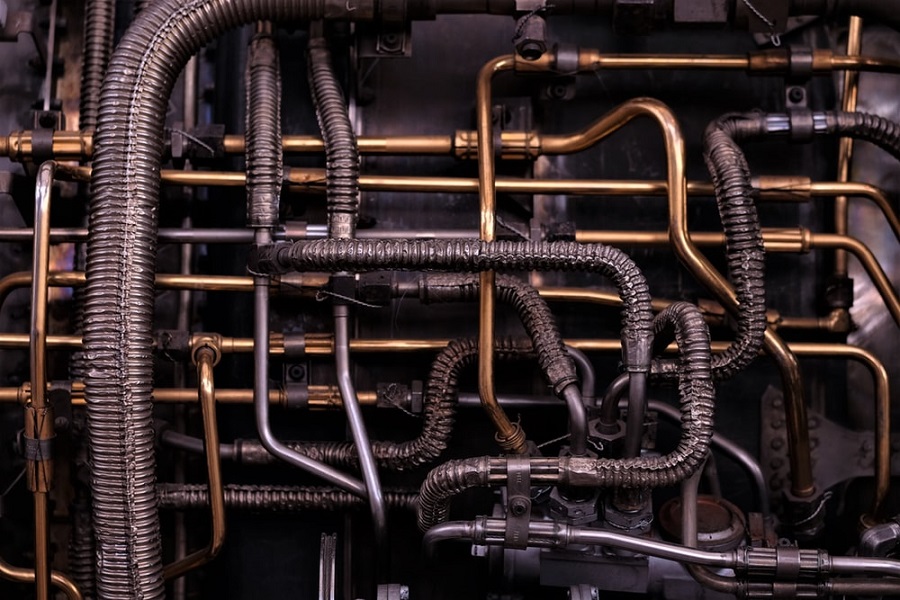Last updated on
Your tap water doesn’t have to taste bad. There are a few reasons why it does and you can fix them. Read on!
If you’ve been experiencing a funny taste in your tap water, it’s important to determine the cause as soon as possible.
There are many potential reasons why your water might taste strange, and some of them could be serious. In this blog post, we’ll discuss some common causes of funky-tasting water and what you can do about them.
We’ll also provide some tips for keeping your water tasting great!
What's Inside
Chemical Tastes and Smells

One common reason for a bad taste in your water is the presence of chemicals. If you notice a strong chlorine taste or smell, it could be due to the disinfection process that your water undergoes.
While chlorine is safe at the levels used for disinfection, some people are sensitive to it and may prefer their water to have a lower chlorine concentration.
If you’re concerned about chlorine in your water, you can contact your local water utility to find out more information.
Another common chemical taste is metals. If your water has a metallic taste, it could be due to high levels of iron, copper, or manganese in the water. These minerals are not harmful at the levels typically found in drinking water, but they can cause a bad taste.
If you’re concerned about the levels of metals in your water, you can contact your local water utility for more information.
What Is Reverse Osmosis?

Reverse osmosis is a water treatment process that removes contaminants from water by forcing it through a semipermeable membrane.
This process can remove a wide range of contaminants, including dissolved minerals, bacteria, and viruses. Reverse osmosis is often used to improve the taste of drinking water.
The cost to add reverse osmosis to a water system is generally much lower than the cost to improve the quality of the water source itself. You can expect the average cost of an RO system to be between $200 and $600.
While some people choose to install their own RO systems, it’s generally recommended that you have a professional install them for you.
Bacterial Contamination

Another potential cause of a bad taste in your water is bacterial contamination. While most municipal water supplies are treated to remove bacteria, there is always a possibility of contamination.
If you notice a musty or earthy taste in your water, it could be due to the presence of bacteria. Bacterial contamination can also cause other symptoms, such as nausea, vomiting, and diarrhea.
If you’re concerned about bacterial contamination in your water, you can contact your local water utility for more information.
Pipe Corrosion

If your water has a metallic taste or smell, it could also be due to pipe corrosion. As water flows through pipes, it can pick up small amounts of metals from the pipes.
Over time, this can cause a bad taste in the water. If you’re concerned about pipe corrosion in your home, you can contact a plumber for more information.
Contaminated Water and Health Risks:
Instances like the Camp Lejeune water contamination lawsuit highlight the severe consequences of water pollution, underlining the importance of regular water testing. If you observe a musty taste or experience symptoms like nausea, vomiting, or diarrhea, it could signal bacterial contamination. Stay informed about the quality of your local water supply and proactively address any concerns. In case of persistent issues, consult a water quality expert to conduct tests and pinpoint the source of the problem. Taking swift action ensures the well-being of your household and helps prevent potential health risks associated with contaminated water.
Many other potential causes of bad taste in your water include algal blooms, runoff from farms or lawns, and industrial pollution. You can contact your local water utility for more information if you’re concerned about any of these issues.
Other Causes
There are many other potential causes of bad taste in your water, including algal blooms, runoff from farms or lawns, and industrial pollution.
If you’re concerned about any of these issues, you can contact your local water utility for more information.
The Color of the Water
If you notice your water is cloudy, discolored, or has floaties in it, don’t hesitate to reach out to your local water utility. These could be signs of contamination and should therefore be investigated promptly.
Additionally, if your water emits a strong odor, this too could be indicative of contamination. To play it safe, avoid using water with a pungent smell for drinking, cooking, or laundry; doing so could make you ill.
Check the Quality of Your Local Water Supply
If you’ve noticed a change in your water’s taste, the first thing you should do is check the quality of your local water supply. If there have been any recent changes or disruptions to the water supply, that could be the cause of the problem.
If everything looks normal with the water supply, the next step is to check your home’s plumbing.
Check for Leaks

Make sure that there are no leaks or other problems with the pipes. If everything looks okay there, the next step is to check your water filtration system.
If you have a reverse osmosis system or a water softener, it’s possible that something is wrong with the filter or the system itself.
If you’re still not sure what’s causing the problem, you can contact a water quality expert for help. They will be able to test your water and determine what’s causing the issue.
There are many potential causes of funky-tasting water, but with a little investigation, you should be able to figure out what’s wrong.
If you’re still having trouble, don’t hesitate to reach out to a professional for help. They will be able to test your water and determine what’s causing the problem.
In the meantime, there are some things you can do to improve the taste of your water.




